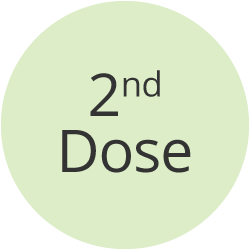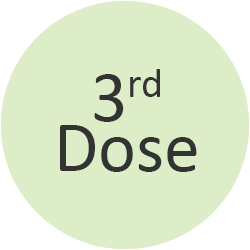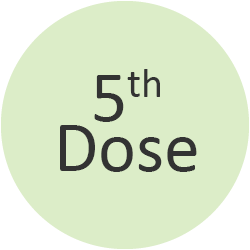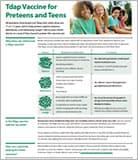Vaccine (Shot) for Diphtheria

How to pronounce diphtheria: [dif-THEER-ee-uh] or Listen [MP3]
Five doses of a DTaP shot for children and one Tdap shot for preteens are recommended by doctors as the best way to protect against diphtheria.
When should my child get a diphtheria shot?
One dose of DTaP at each of the following ages:
One dose of Tdap at the following ages:
Why should my child get a diphtheria shot?
- Protects against diphtheria, which can be very serious and even deadly, as well as tetanus, and whooping cough (pertussis).
- Prevents your child from developing a thick coating in the back of the nose or throat from diphtheria that can make it hard to breathe or swallow.
- Keeps your child from missing school or child care, and you from missing work.
Which vaccines protect against diphtheria?
Two shots help protect children against diphtheria: DTaP and Tdap. Both also help protect against tetanus and whooping cough. These shots do not offer lifetime protection. People need booster shots to keep up protection.
Diphtheria shots are safe.
Diphtheria shots are safe and effective at preventing diphtheria. Vaccines, like any medicine, can have side effects. These are usually mild and go away on their own.
What are the side effects?
Most children don’t have any side effects from DTaP or Tdap. The side effects that do occur from DTaP are usually mild, and may include:
- Soreness or swelling where the shot was given
- Fever
- Fussiness
- Feeling tired
- Loss of appetite
- Vomiting
More serious side effects are very rare but with DTaP can include:
- A fever over 105 degrees
- Nonstop crying for 3 hours or more
- Seizures (jerking, twitching of the muscles, or staring)
The side effects from Tdap are usually mild, and may include:
- Pain, redness, or swelling where the shot was given
- Mild fever
- Headache
- Feeling tired
- Nausea, vomiting, diarrhea, and stomachache
Some preteens and teens might faint after getting Tdap or any other shot.
To prevent fainting and injuries related to fainting, people should be seated or lying down during vaccination and remain in that position for 15 minutes after the vaccine is given.
Prepare for your child's vaccine visit and learn about how you can:
- Research vaccines and ready your child before the visit
- Comfort your child during the appointment
- Care for your child after the shot

What are the symptoms of diphtheria?
Diphtheria starts with a sore throat, mild fever (101 degrees or less), and chills. Next, it can cause a thick coating in the back of the nose or throat. The coating may be white or grayish and makes it hard to breathe or swallow.
Is it serious?

Diphtheria can be very serious. In children younger than 5 years old, as many as 1 out of 5 children who get diphtheria dies. About 1 out of 10 people who get diphtheria dies.
The coating in the back of the nose or throat can get so thick that it blocks the airway, so the person can’t breathe.
The diphtheria toxin, caused by strains of bacteria called Corynebacterium diphtheriae, can affect the heart, causing abnormal heart rhythms and myocarditis (damage to the heart muscle). It can also cause nerve damage.
How does diphtheria spread?
Diphtheria bacteria spread when an infected person coughs or sneezes. A person who does not receive treatment can spread the bacteria for about 2 weeks after infection.
The Centers for Disease Control and Prevention, American Academy of Family Physicians, and American Academy of Pediatrics strongly recommend children receive all vaccines according to the recommended vaccine schedule.
- Get a list of vaccines that your child may need based on age, health conditions, and other factors.
- Learn the reasons you should follow the vaccine schedule.
Related Resources:
- Vaccine Information Statements (VISs) have detailed information about recommended vaccines. Read the VISs for vaccines that protect against diphtheria:
- DTaP vaccine — protects against diphtheria, tetanus, and whooping cough (for infants and children) (Other Languages)
- Tdap vaccine — protects against diphtheria, tetanus, and whooping cough (for preteens, teens, and adults) (Other Languages)
- Td vaccine – protects against diphtheria and tetanus (for adults) (Other Languages)





